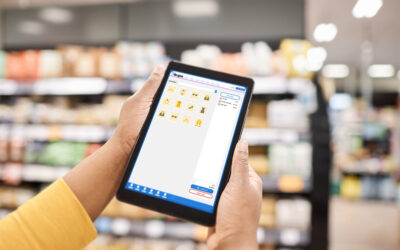Introduction
In today’s competitive market, retaining customers is just as important as acquiring new ones. A well-structured loyalty program can help you achieve both goals, driving repeat business and fostering customer loyalty. This guide will walk you through the steps to implement a successful loyalty program in your business, maximizing customer engagement and satisfaction.
Why Implement a Loyalty Program?
Building Long-Term Relationships:
Loyalty programs create emotional connections between your brand and customers, making them more likely to return.
Increasing Customer Lifetime Value:
By rewarding repeat purchases, you can increase the average revenue generated from each customer over their lifetime.
Gathering Valuable Data:
Loyalty programs allow you to collect data on customer preferences and behaviors, helping you tailor your marketing strategies.
Steps to Implement a Loyalty Program
1. Define Your Goals
What to Consider:
Start by identifying the primary objectives of your loyalty program. Are you looking to increase repeat purchases, improve customer engagement, or gather data on shopping habits? Defining clear goals will help shape your program’s structure and marketing efforts.
Why It Matters:
Having specific goals allows you to measure the success of your loyalty program and make adjustments as needed.
2. Understand Your Customers
What to Do:
Conduct surveys or analyze customer data to understand your audience’s preferences, behaviors, and spending habits. This insight will guide you in designing a program that resonates with your target market.
Why It Matters:
A customer-centric loyalty program will ensure that the rewards and incentives you offer align with what your customers value most.
3. Choose the Right Type of Loyalty Program
Popular Options:
- Point-Based System: Customers earn points for every purchase, which can be redeemed for discounts or free products.
- Tiered Rewards: Create levels of loyalty where customers can unlock better rewards as they spend more.
- Referral Programs: Encourage customers to refer friends and family in exchange for rewards.
- Subscription Services: Offer exclusive benefits or discounts to customers who pay a monthly fee.
Why It Matters:
Selecting the right type of loyalty program will ensure it meets the needs of your business and resonates with your customers.
4. Design Your Rewards Structure
What to Consider:
- Reward Types: Decide whether to offer discounts, free products, exclusive access, or special events.
- Redemption Process: Ensure that redeeming rewards is straightforward and hassle-free for customers.
- Expiration Policies: Define if and when rewards will expire, keeping in mind how it affects customer engagement.
Why It Matters:
A well-structured rewards system will motivate customers to participate and return to your business.
5. Leverage Technology
What to Use:
Invest in a reliable loyalty program software or POS system that can track customer purchases and manage rewards. Consider mobile apps for easy access and notifications.
Why It Matters:
Technology simplifies the process of tracking and managing loyalty programs, enhancing the customer experience and reducing administrative burdens.
6. Promote Your Loyalty Program
What to Do:
- In-Store Marketing: Use signage, flyers, and staff recommendations to inform customers about the program.
- Email Campaigns: Send targeted emails to your customer base announcing the launch of the loyalty program.
- Social Media: Utilize your social media platforms to create buzz and encourage sign-ups.
Why It Matters:
Effective promotion will increase awareness and participation in your loyalty program, driving customer engagement.
7. Monitor and Optimize
What to Do:
Regularly assess the performance of your loyalty program using analytics tools. Track metrics such as customer retention rates, program participation, and overall sales impact.
Why It Matters:
Continuous monitoring allows you to make data-driven adjustments, improving the program’s effectiveness and ensuring it meets your business goals.
ConclusionImplementing a loyalty program can significantly enhance customer retention and drive revenue for your business. By defining your goals, understanding your customers, choosing the right program type, designing a compelling rewards structure, leveraging technology, promoting effectively, and continuously monitoring performance, you can create a successful loyalty program that benefits both your customers and your bottom line.
Ready to take your customer loyalty to the next level? Contact us today to learn how our POS and loyalty program solutions can help you build lasting relationships with your customers!




